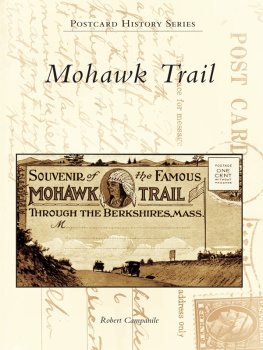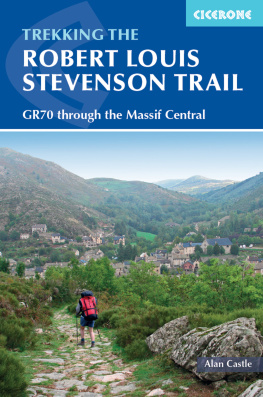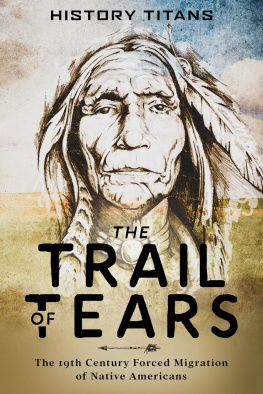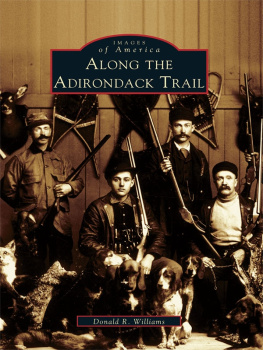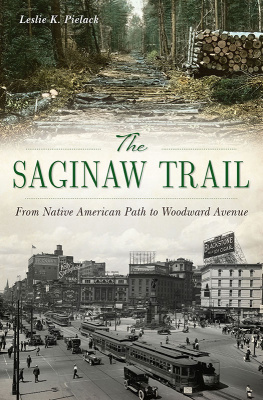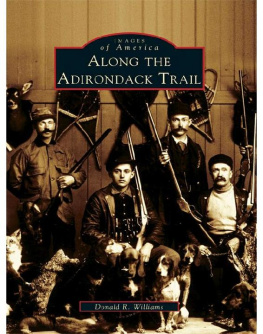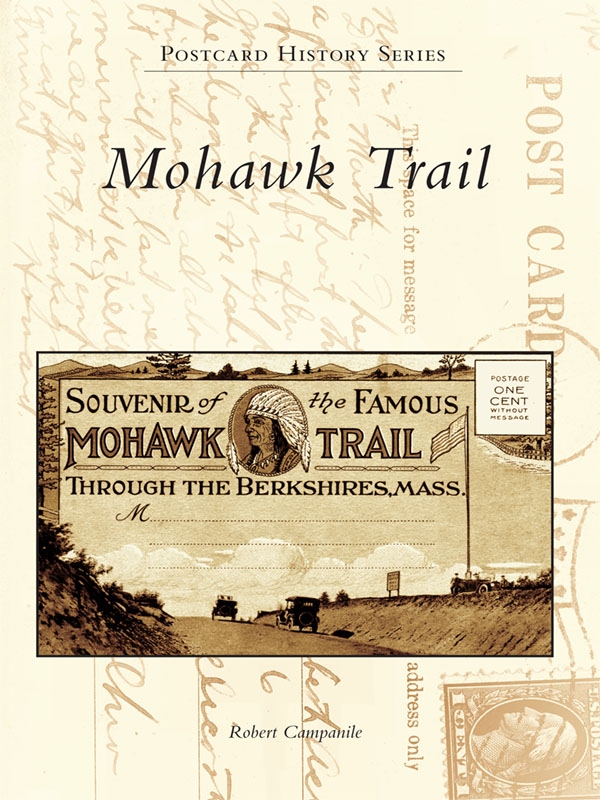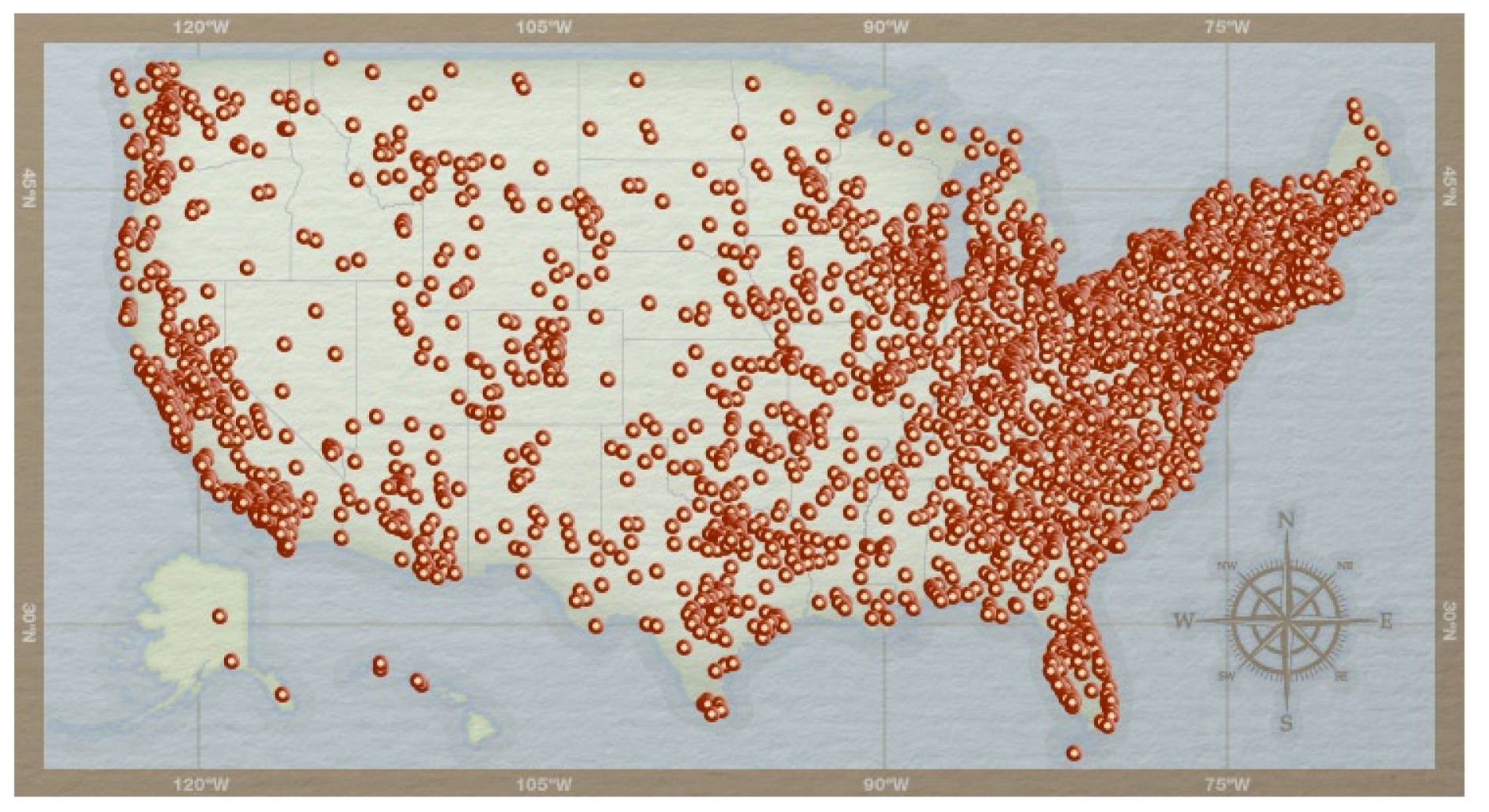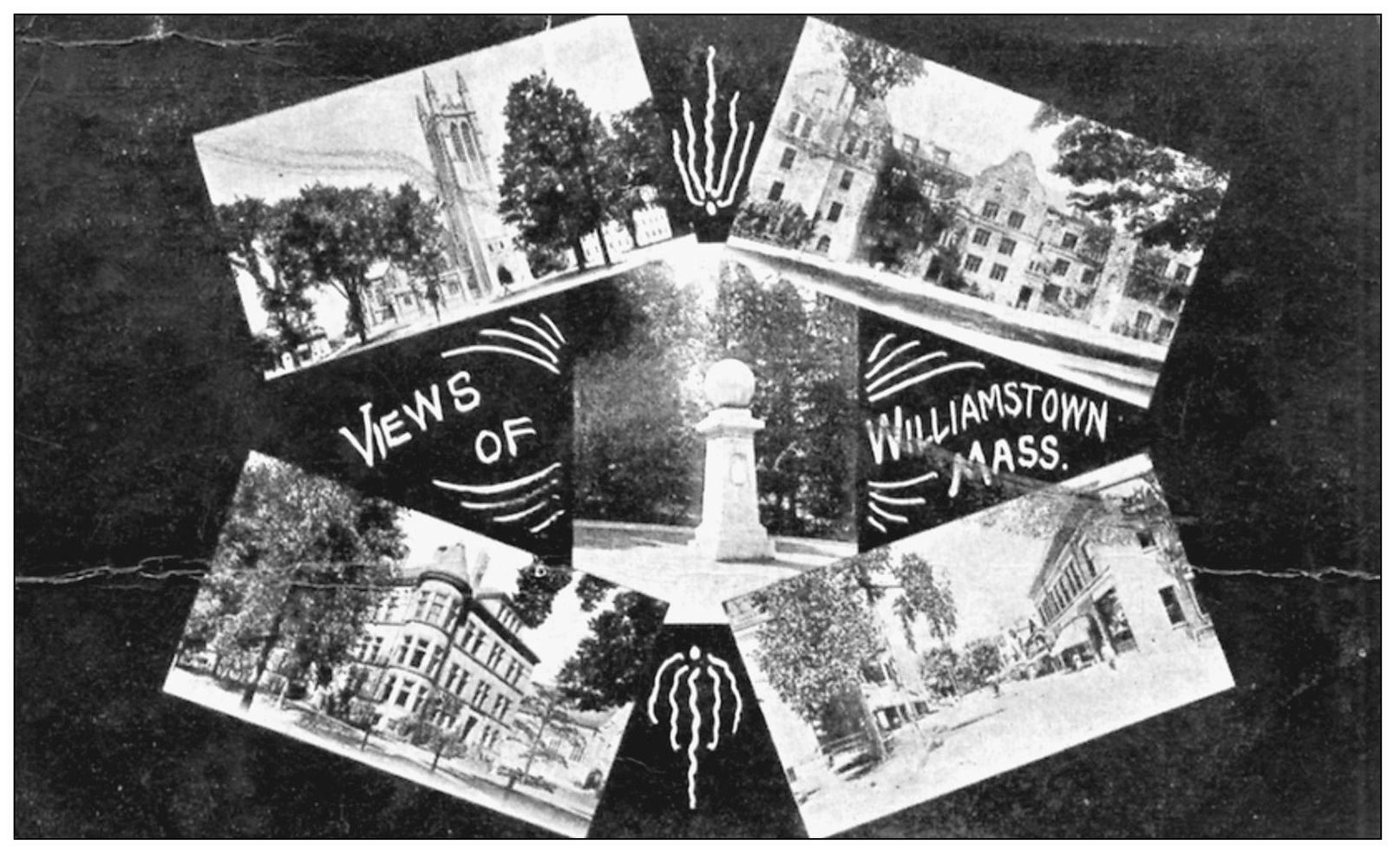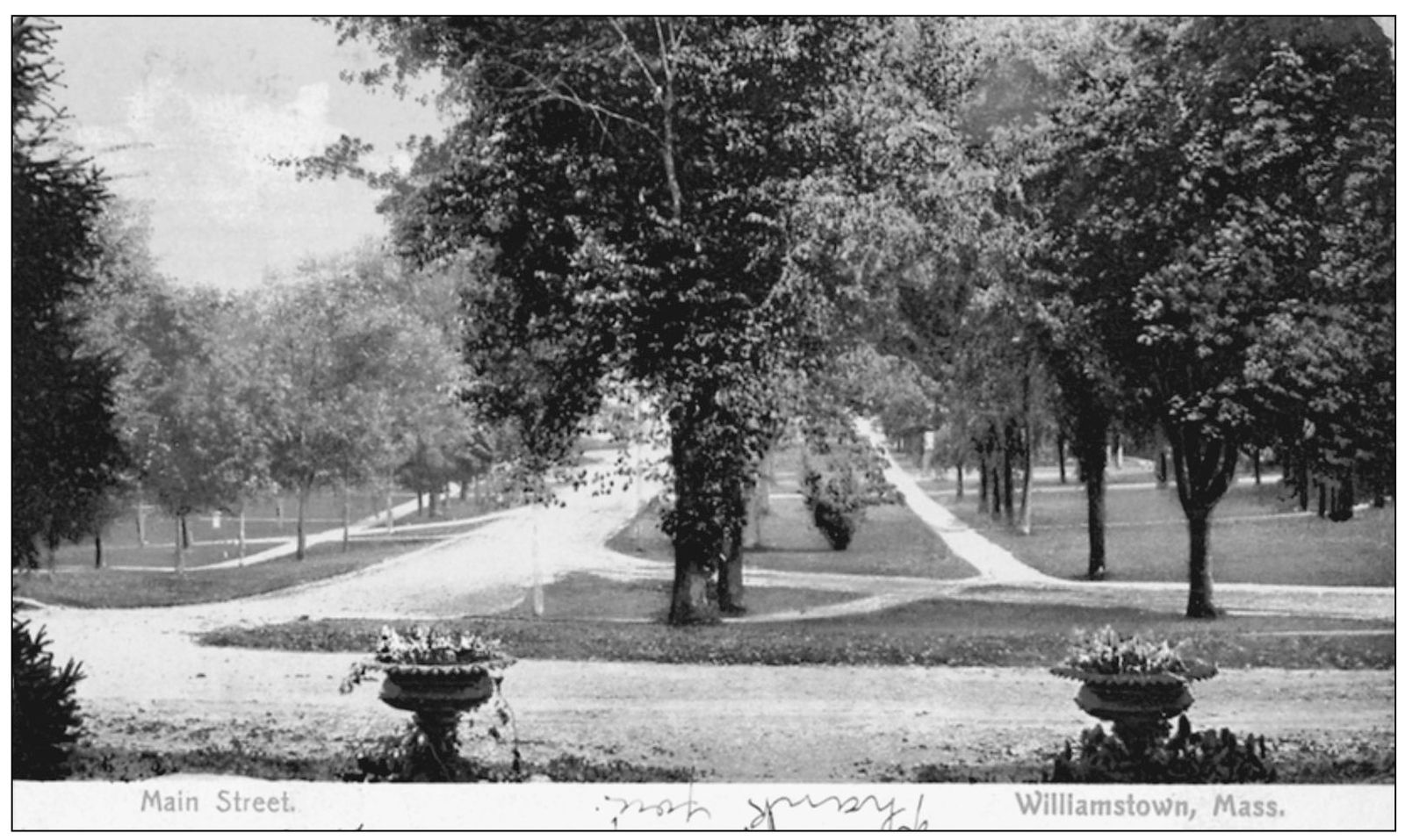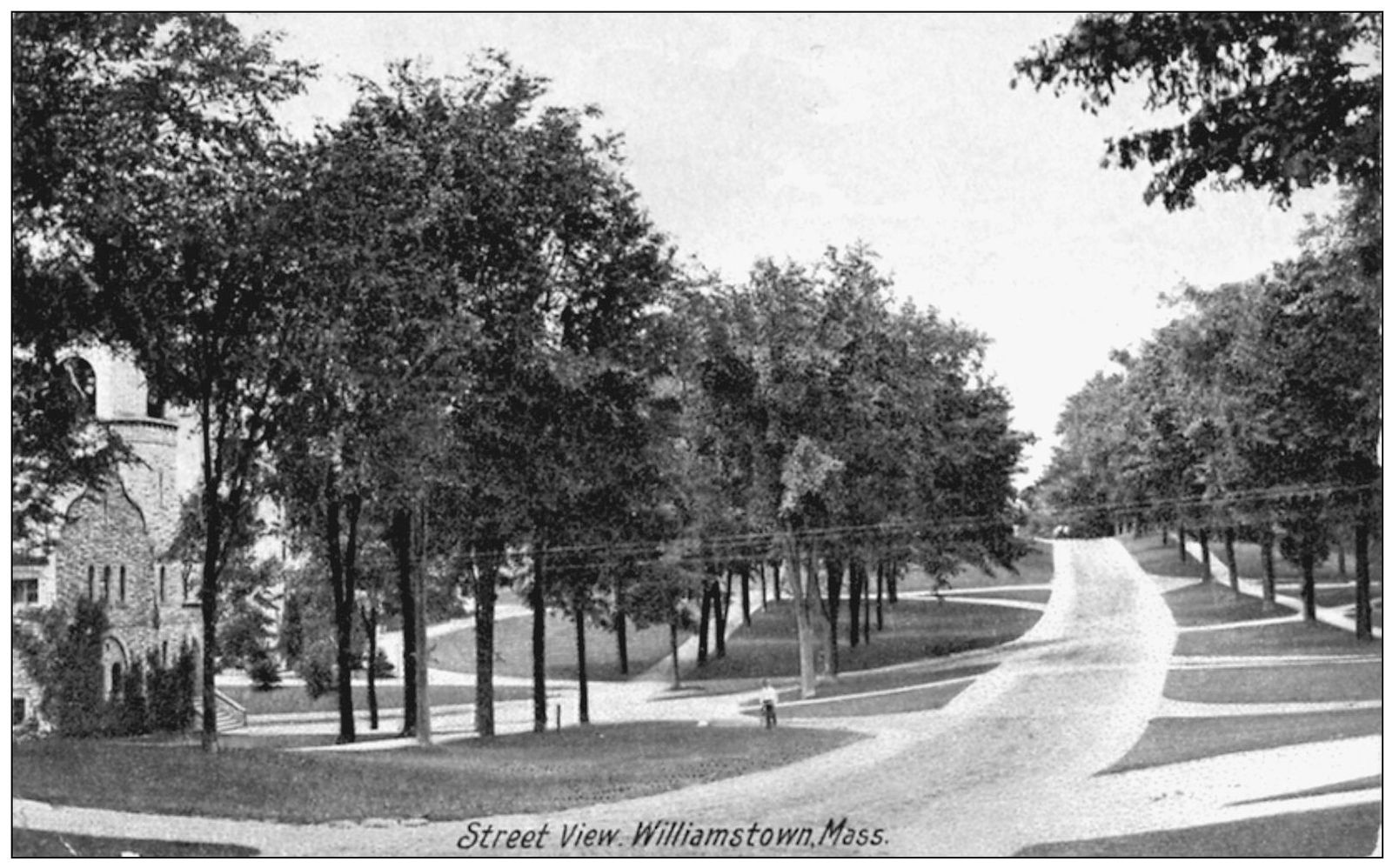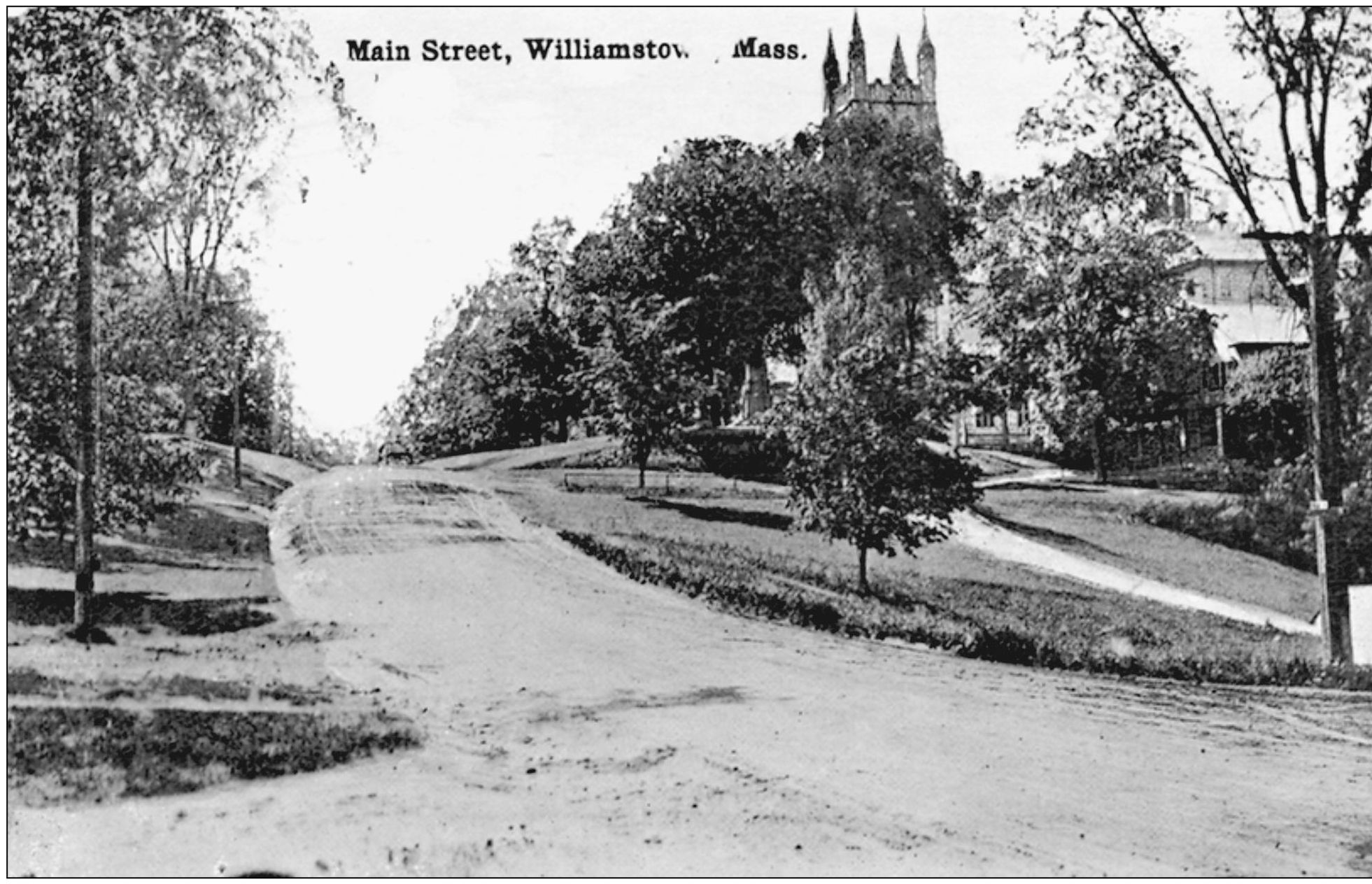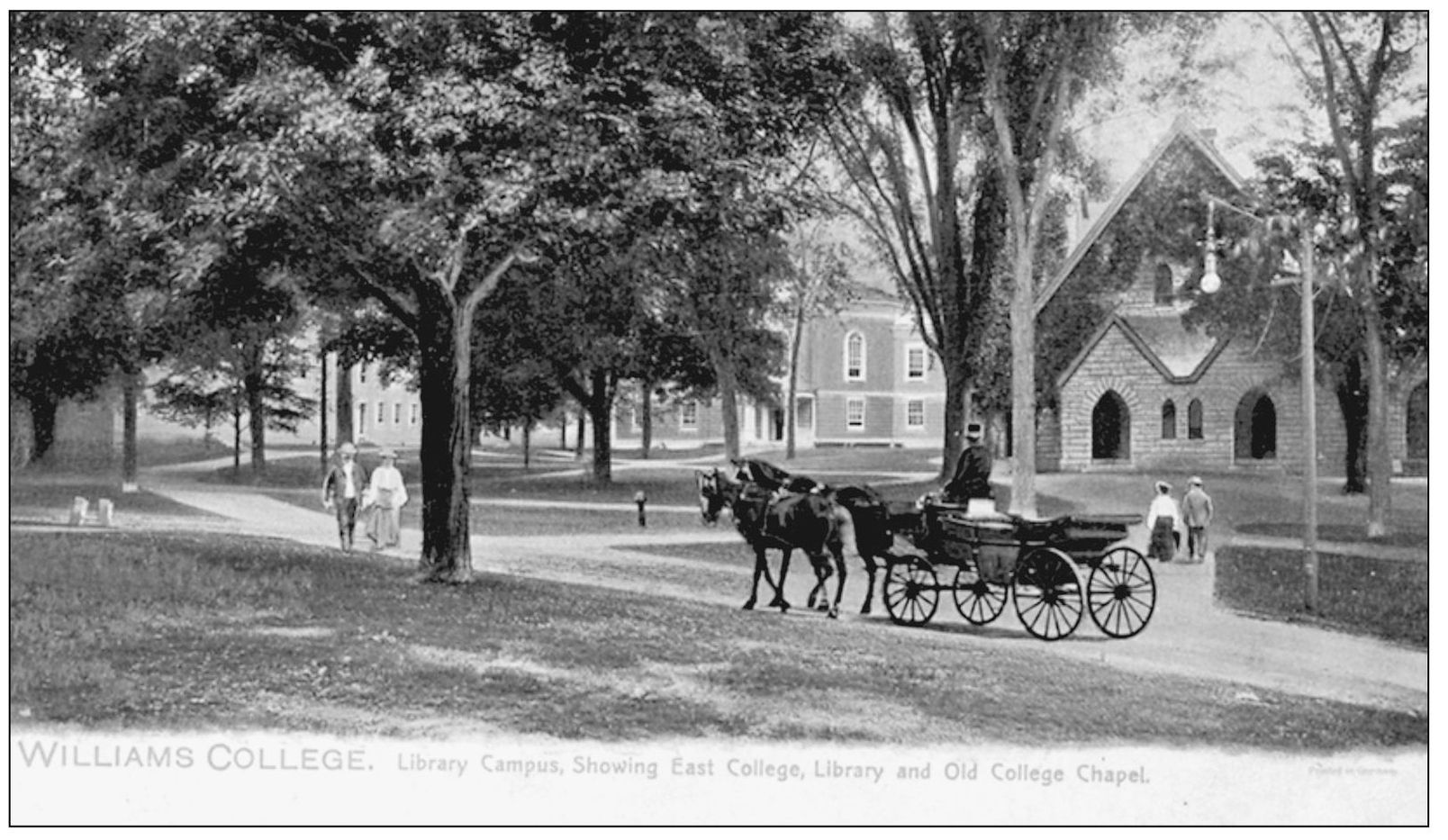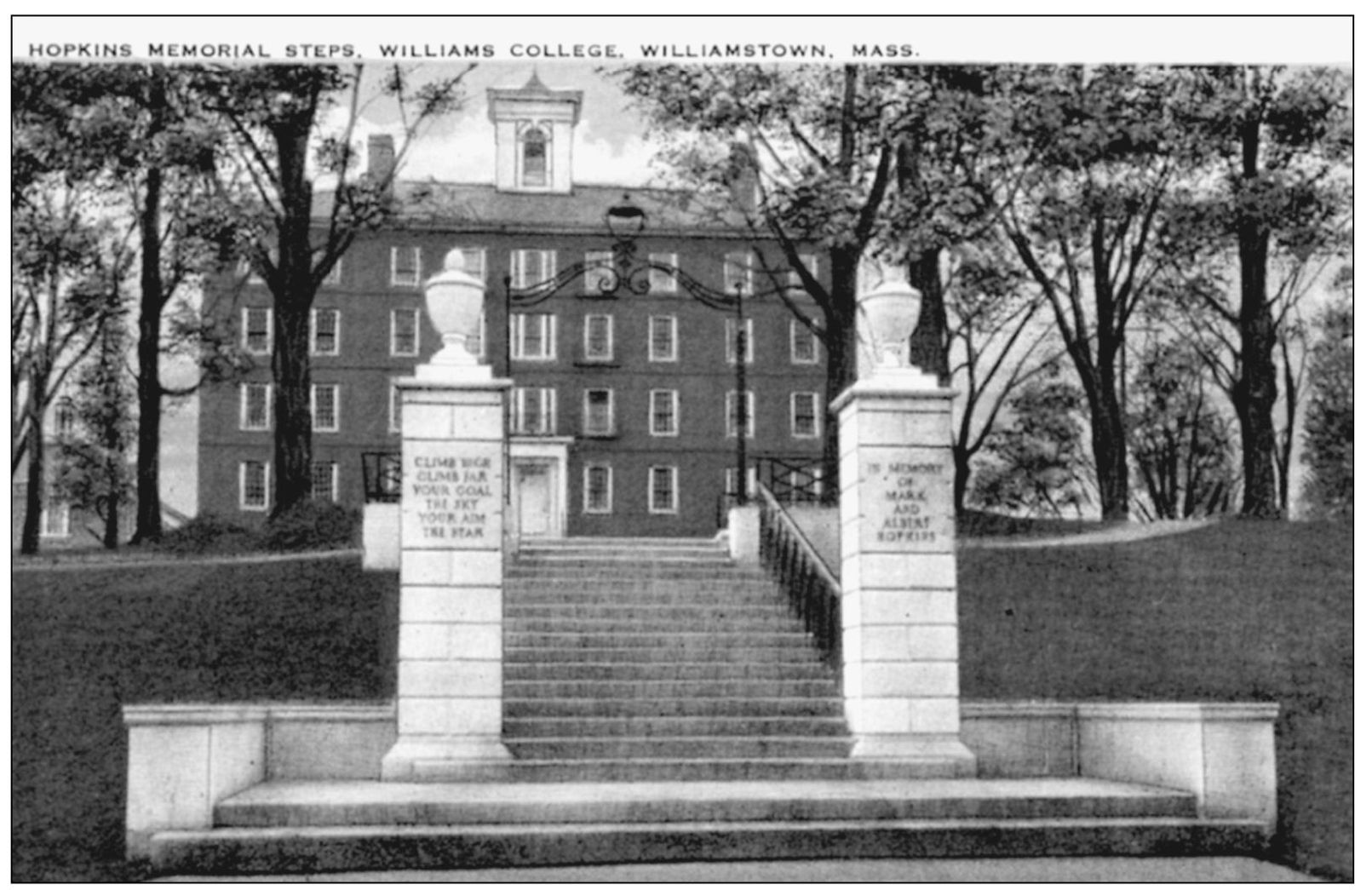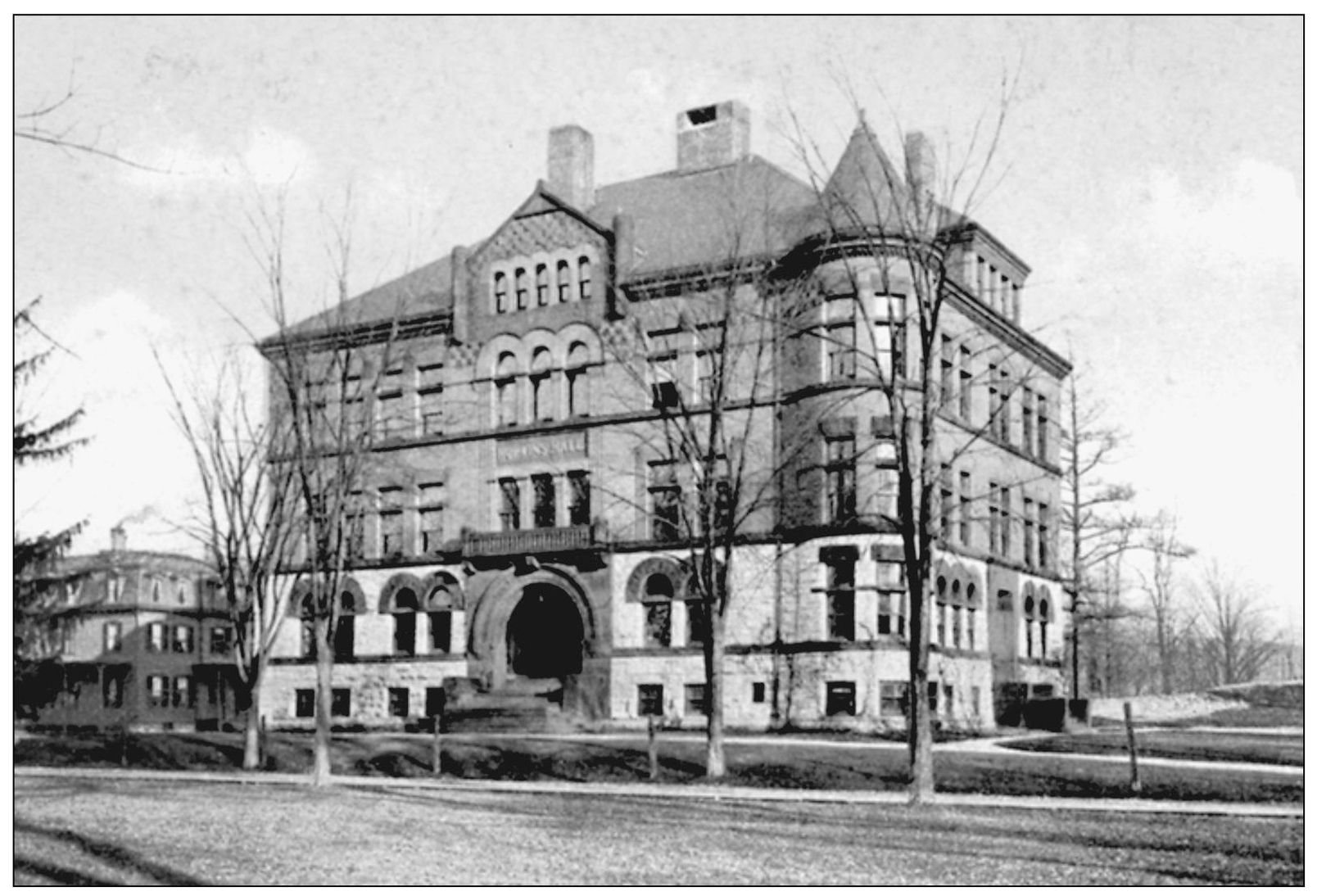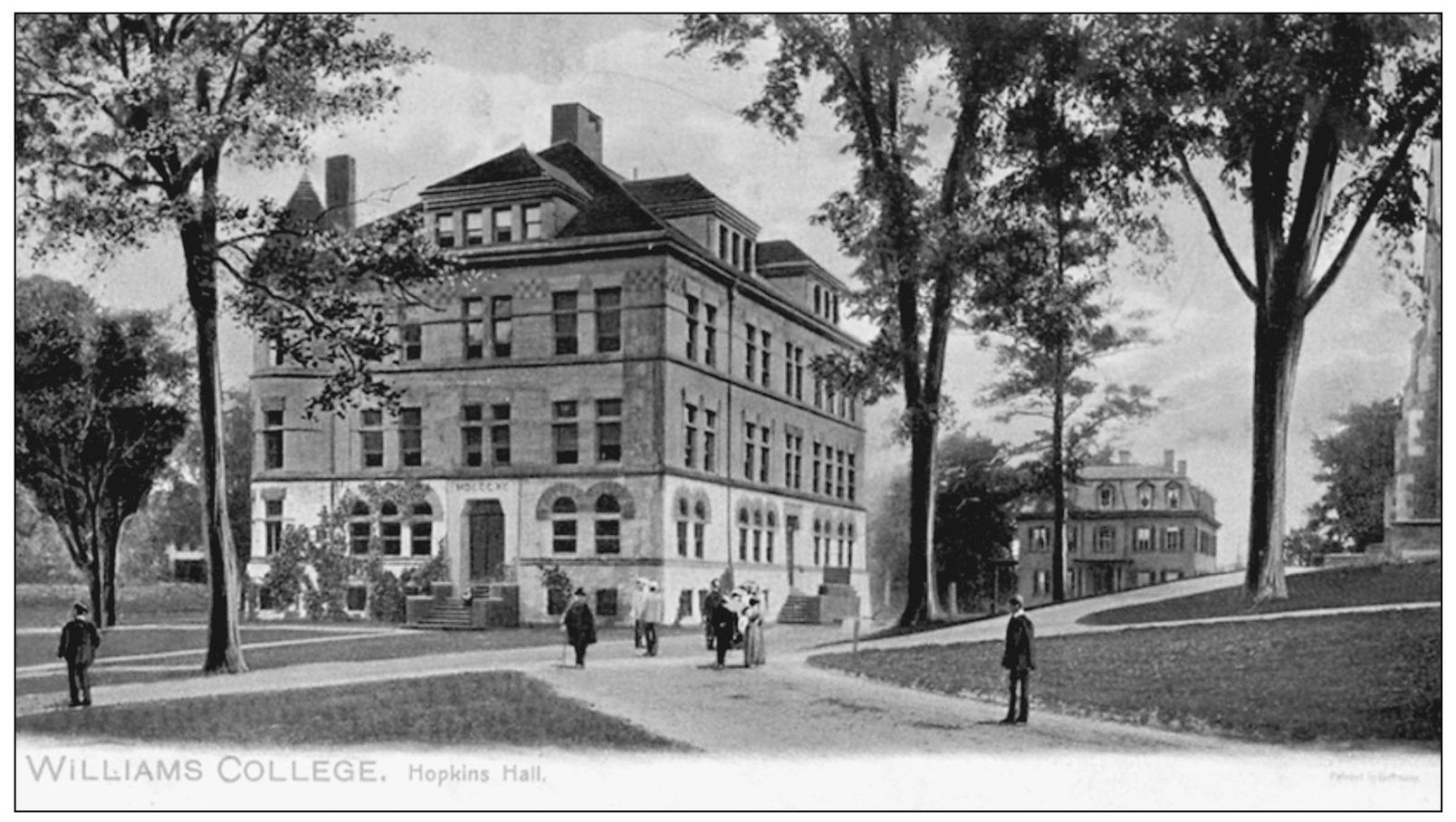One
GO EAST, YOUNG MAN, THROUGH WILLIAMSTOWN
The modern Mohawk Trail begins at the westernmost point in Massachusetts in Williamstown. The town was founded in 1749 and incorporated in 1765. It is the first to greet the trail traveler from the west and the last to bid farewell from the east. The towns elegance expresses itself through both landscape and architecture. The modern Mohawk Trail splices through the spacious Williams College campus. The postcard shows, clockwise from top left, Thompson Memorial Chapel, Morgan Hall, Spring Street, and Hopkins Hall.
The original Mohawk Trail is said to have started at a point on the east bank of the Hudson River in New York, then east to the branch of the Hoosac River, through the towns of Hoosac, New York, Pownel, and Vermont, and entering Massachusetts through Williamstown. The modern Mohawk Trail runs down Main Street (Route 2), as seen here in an early postcard view facing east.
The Mohawk Trail, as seen here facing west on Main Street, was essentially the main route between the valley of the Hudson River in New York and the valley of the Connecticut River in Massachusetts. It represented the path used in times of peace as well as in times of hostilities between the natives of the Five Nations of eastern and central New York and the Pocumtucks of the Connecticut Valley with the Abenaki, Algonquians, and Mahicans also in the region.
This view of the trail on Main Street is facing west toward the Williams College campus. The church tower is Thompson Memorial Chapel. In time, the Mohawk Trail and its extensions would become part of the main thoroughfare between Boston and Troy, New York, and transform into more of a highway than a path.
The initial stretch of the Mohawk Trail in Williamstown divides the Williams College campus. Williams College owes its name and its origins to an educational bequest of Col. Ephraim Williams (who was killed at the Battle of Lake George in 1755) for the purpose of founding a free school in Williamstown. Through the trees in the postcard are seen, from left to right, the East College Building, the library, and the old college chapel.
Amos Lawrence was in the audience for a lecture by Williams College president Mark Hopkins in Boston. He was so impressed he became a benefactor for the college even though he had never seen it. This Lawrence Library building was one result of his generosity. It opened in 1846. The postcard shows the two-wing extension that was added to the original building by the late 1800s. Today the structure serves as the home of the Williams College Museum of Art.
As the trail runs east through the campus, it ascends up a gradual hill. On top sits the first building of Williams College, the West College Building. The college was chartered in 1785. Before long, it would have a four-story brick building with its first live-in students. On October 26, 1791, the free school admitted 45 scholars.
In front of the West College Building are the Mark Hopkins Memorial Steps honoring the man who was the colleges fourth president, in 1836. The plaque on the left pillar reads, Climb High / Climb Far / Your Goal the Sky / Your Aim the Star.
This postcard shows Hopkins Hall, built in 1890. Mark Hopkins was referred to by some as the colleges Man of the Century. The trail through the campus is a literal architects dream highway as witnessed by these magnificent structures.

